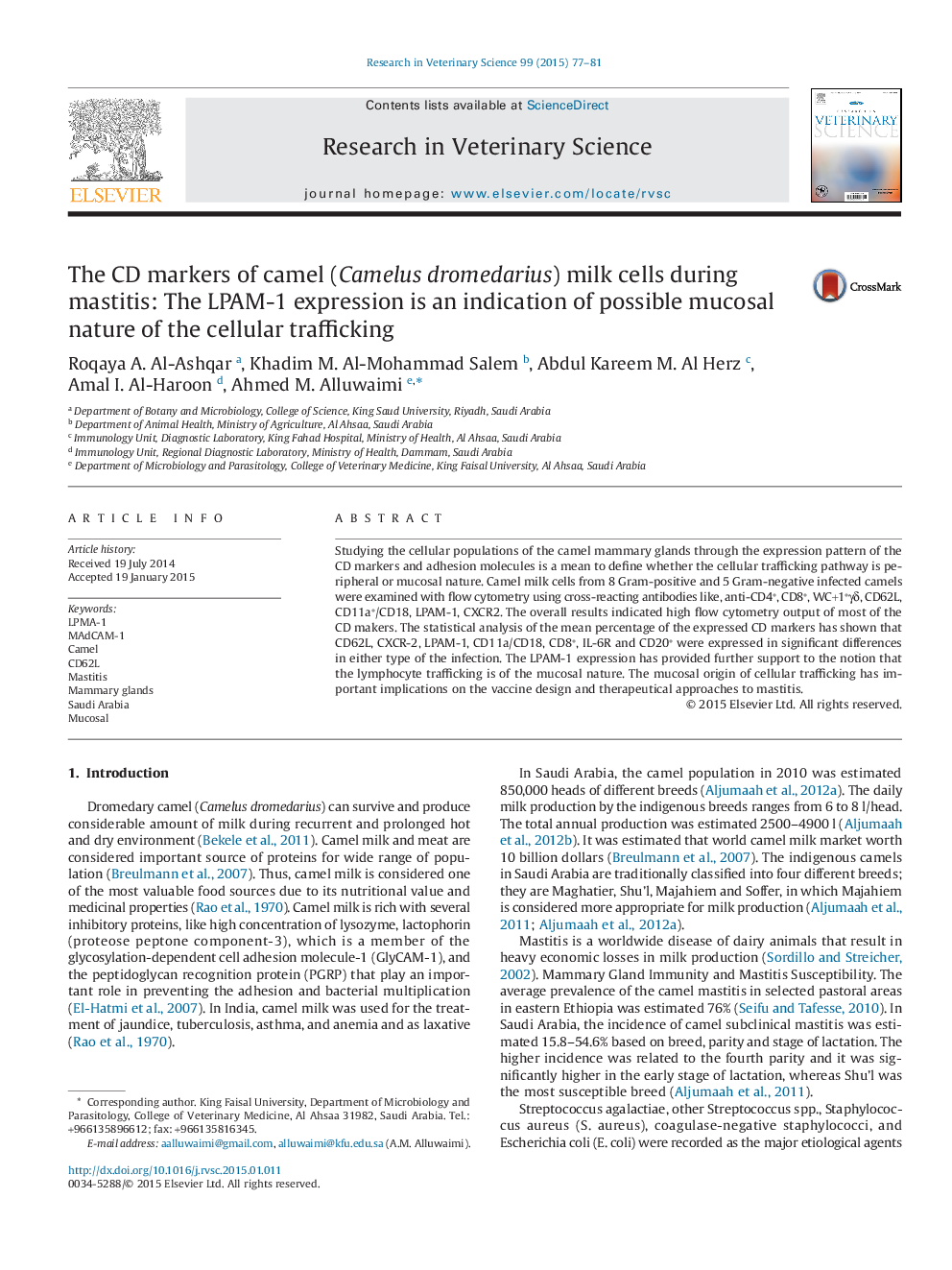| Article ID | Journal | Published Year | Pages | File Type |
|---|---|---|---|---|
| 2454864 | Research in Veterinary Science | 2015 | 5 Pages |
•The camel mammary glands cellular populations were screened during both Gram (+) and (−) mastitis.•Flow cytometry with xenoantibodies were seen efficient in screening the camel CD markers.•Mastitis induced expression of wide range of CD markers like LPMA-1, CD62L, CXCR-2, and CD11a/CD18.•High LPMA-1 expression indicated the possible mucosal nature of the cellular trafficking.•The findings raise important consideration in mastitis treatment and vaccination approaches for camel mastitis.
Studying the cellular populations of the camel mammary glands through the expression pattern of the CD markers and adhesion molecules is a mean to define whether the cellular trafficking pathway is peripheral or mucosal nature. Camel milk cells from 8 Gram-positive and 5 Gram-negative infected camels were examined with flow cytometry using cross-reacting antibodies like, anti-CD4+, CD8+, WC+1+γδ, CD62L, CD11a+/CD18, LPAM-1, CXCR2. The overall results indicated high flow cytometry output of most of the CD makers. The statistical analysis of the mean percentage of the expressed CD markers has shown that CD62L, CXCR-2, LPAM-1, CD11a/CD18, CD8+, IL-6R and CD20+ were expressed in significant differences in either type of the infection. The LPAM-1 expression has provided further support to the notion that the lymphocyte trafficking is of the mucosal nature. The mucosal origin of cellular trafficking has important implications on the vaccine design and therapeutical approaches to mastitis.
